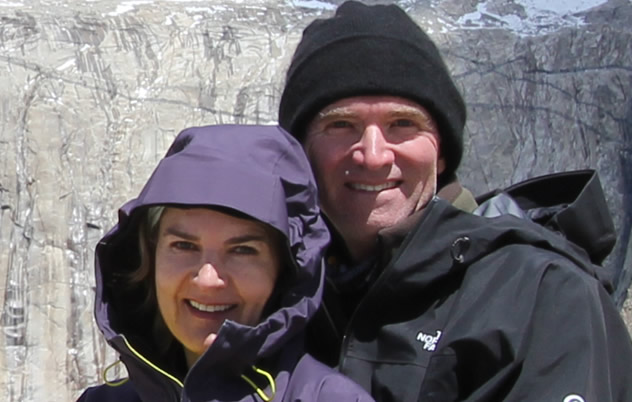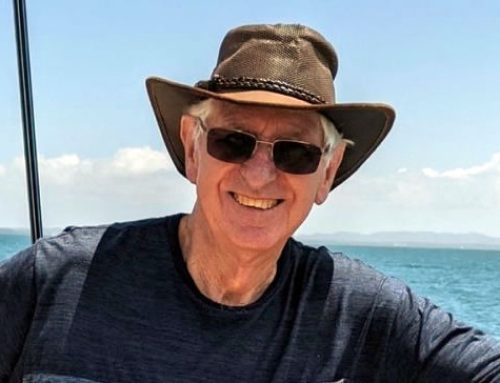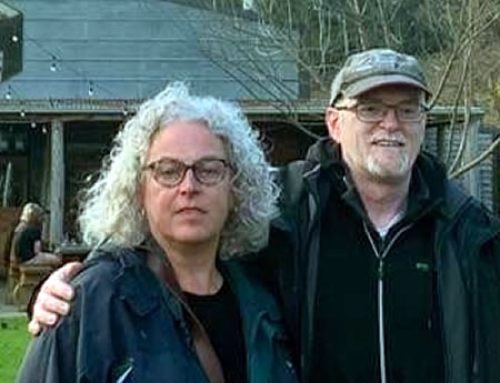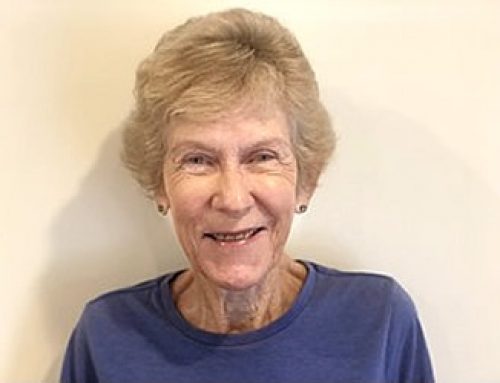My journey – from an active 57 year old cycling 250 km a week, completed his first triathlon, trekking in Nepal and Patagonia, an avid skier and traveling the world – to a 62 year old recovering from a heart transplant following a 4 year battle with AL Amyloidosis.
As in many cases, the diagnosis of my Amyloidosis extended over 12 months and included many misdiagnoses which were not only frustrating but likely resulted in further, unnecessary accumulation of amyloid deposits in my heart and deterioration of my health.
My symptoms were simple to explain – loss of stamina and strength. I could no longer cycle the distances or maintain/achieve previous speeds. On reflection and with the value of hindsight, I suspect Amyloidosis was present for quite some time prior to this with the impact to my stamina and strength only apparent on very long rides or mountain accents.
The Key medical indicators from visits with multiple specialists was low voltage from the
EKG, thickened heart walls from the echo, infiltrative heart disease from the MRI and swollen ankles.
I was living overseas at the time and the local doctors sent me for cancer screening, to lung specialists where I was diagnosed with a lung condition which wasted 4 months, a cardiologist where I was diagnosed with athletes heart, blood tests and scans.
Being naturally inquisitive and armed with the results of the many tests I started my own research and believed I had Amyloidosis. The doctors were not convinced and started yet another round of tests.
My savior was a personal trip to Brisbane where I took the opportunity to contact the Australian Amyloidosis team and share my suspicions. I was diagnosed within 1 week as having AL Amyloidosis with cardiac involvement.
I immediately returned home to Sydney where treatment commenced within a week. I was under the care of the Sydney Amyloidosis team at Westmead Hospital for three and a half years. For those familiar with Free Light Chain counts, my counts dropped from over 1,200 to within normal ranges!
For those not familiar with Free Light Chains, these are described extensively within the literature and are a key marker for Amyloidosis and are actively monitored to determine the effectiveness of the treatment programs.
Despite being in remission, no further Amyloid being deposited in my heart, and no absorption of the existing Amyloid deposits my health and fitness continued a slow decline.
With continuing delays in the development of new drugs to raw the amyloid out of the organs, in my case my heart, I was fortunate to be accepted into a trial at St Vincents Hospital which included a heart transplant followed by a stem cell transplant. The heart transplant providing the strength and health to enable the stem cell transplant which would hopefully provide me with a number of years free from Amyloidosis and opportunity for new, effective treatments for Amyloidosis to be developed.
The combination of both providing a new life, and while not aiming or dreaming of picking up my previous life, at least a quality of life that I could not have imagined. And, the ability to again enjoy my life with my family and my first grand child.
The decision was not an easy one as the heart transplant is a clearly a major operation, involved risk and lifetime monitoring and treatment. With continuing delays in the availability of new drugs the heart transplant offered a proven, timely and real option. Equally, the transplant program in Australia is a well proven practice staffed by experienced professionals. For me, there were no complications and the operation was completed within about 5 hours and was followed by a few days in ICU, a high care ward and then rehabilitation. I was surprised by the lack of pain and discomfort and the short time between the operation and being able to resume a “normal” life, albeit with minimal strength and stamina. The operation was followed by around 10 days in rehab to ensure I could operate independently at home with stairs and low seating.
For us, I believe the heart transplant was the right option as it provided a certainty, which, with my deteriorating health did not exist if we continued with the existing treatments.
That is not to say that this is the best option for others, many of whom have shown significant improvements with treatment as outlined in their Facebook posts.
When well enough following my heart transplant I went into full recovery mode with regular strength and fitness exercise. I walked 3-5klm multiple times a week and was able to walk up to the shops for the first time in 3 years. Hills were still a challenge but getting easier every day!!
This training regime had to be put on hold while I underwent a successful stem cell transplant 5 months after the heart transplant. While less invasive than the heart transplant, in some ways it was harder as there was no noticeable improvement after this transplant as was the case with the heart transplant.
I am now refocused on strength and fitness. While I was in remission before the stem cell transplant, I am now looking forward to many years of a “new” life and picking up on my interests and passions after a 4 year hiatus.
Having mentioned the importance of the Australian Amyloid team and local experts in my journey, equally important was my family who have supported me 110% and in particular my wife and carer.
It is a team effort.
Our life changed during this time – rather than trekking and cycling we spent as much time as we could cruising and travelling in Australia. Our cruises included the Kimberley’s, a circumnavigation of Australia, the Baltic and Iceland. In Australia, we spent time in Kakadu, Flinders Rangers, North Coast of NSW, Southern Tablelands, Blue Mountains etc. There were so many opportunities and things we were able to do.

There is still a long journey ahead of us – we are optimistic, enthusiastic about the future and starting to dream.
My ambitious goal is to participate in the cycling road race and time trial at the 2021 World Transplant Games!
Key for me was to:
- My carer – my wife – who provided support and companionship throughout my journey.
- Be positive – there is an excellent, experienced group within the Australian Amyloidosis team as well as other experienced professionals practicing in Australia..
- To get out and enjoy myself with my family, and particularly my wife, who is my carer.
- Learn as much as you can about Amyloidosis , its treatment and monitoring. Be actively involved in the treatment and monitoring with your specialist.
- Join or subscribe to the various groups, communities and events related to Amyloidosis.
- Follow the advice and recommendations of the specialists – the treatments are well understood and proven.
- Every person is different, learn from others but be cautious of comparing treatments and results.
August 24, 2020
It is now over 18 months since the heart transplant and over 12 months since the stem cell transplant.
Other than a few speed bumps that I will touch on below everything is on track and very positive. The speed bumps and lessons learnt are:
Be very vigilant about diet and following any guidelines provided. We celebrated 4 months post stem cell transplant with a trip to a luxury resort in the country. I ate exactly the same food as my wife but unfortunately I suffered from severe food poisoning and was evacuated by air ambulance to the ICU! We don’t know the cause but believe it may have been cold cooked meat or salad that had been sitting for a few hours – both were on the list of foods to avoid. While I normally do avoid these and other foods on the list – we let our guard down in a relaxed atmosphere at a 5* resort.
Similarly with taking the drugs as prescribed. In this case the doctors were trying to wean me off the steroids – something many of us have grown to hate!! I did get down to 0mg over an extended period of time. Unfortunately, 3-4 weeks later I had moderate rejection of the heart and ended up back in hospital. Fortunately, lesson learnt, no negative impact and acceptance that I will be taking low doses of steroids, as with other drugs, for the rest of my life.
On the positive side: My fitness and strength has improved dramatically. I regularly walk 20-25klm each week around the harbour foreshores and continually marvel at my increasing ability to walk. From not being to walk more than 100m on the flat to being able to comfortably walk 5-10klm around the harbour.
One recommendation/comment resulting from my quest to regain strength and fitness – try to keep as active as possible. I didn’t appreciate how far my health had deteriorated until I started trying to rebuild. Keep active and busy.
I still have a long way to go to achieve my ambitious goal, partly due to Covid 19 but also due to the impact of the food poisoning, rejection etc that have set me back. The transplant games are still my objective – just not sure if I will be ready and we will be comfortably travelling next year – particularly to the US.
I have also been very fortunate to spend time and enjoy being with and seeing my grand daughter grow up – something very special.
We are still dreaming about our future despite our extended overseas holiday being cancelled this year. I suspect this will now be 2022 with even greater, more extended plans.
I would also re-emphasise my earlier comments with respect to carers, my wife, and the extended Amyloidosis community. There is excellent support and experience available to support us all through this very difficult and challenging journey. We hope everyone can enjoy a great result.
For more information about this patient’s experience you can send them an e-mail using the form below.






